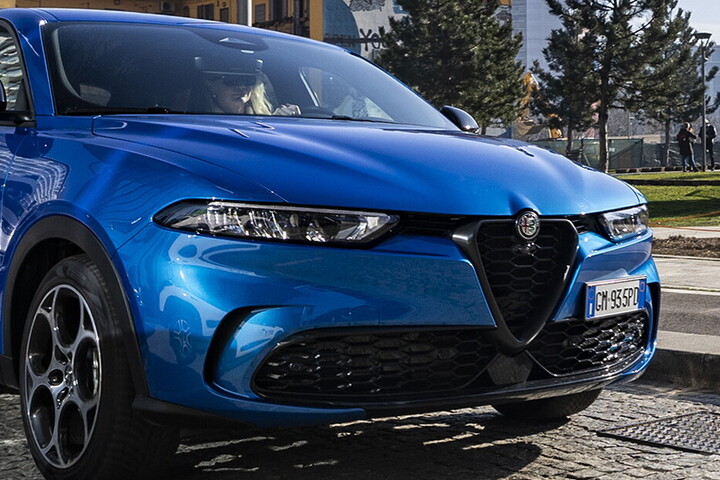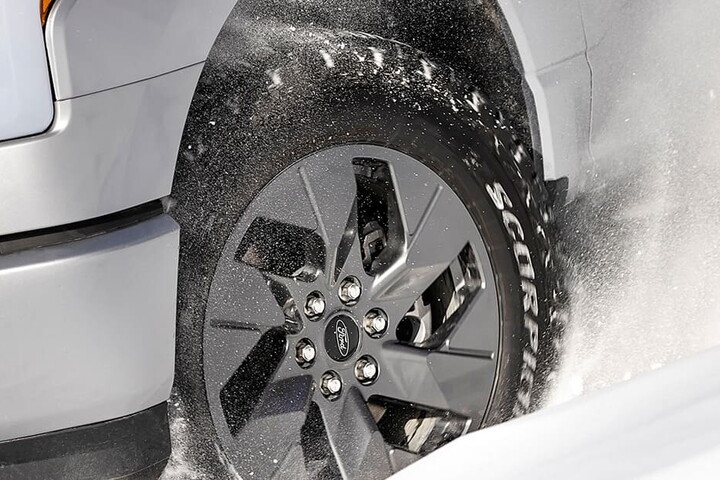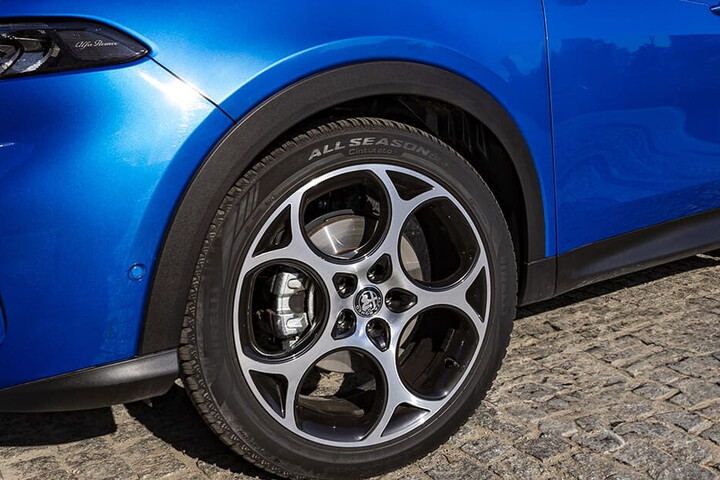To comply with the law in most European countries and drive safely in the winter – or at high altitude where snow is a risk or you see the relevant road signs – there are two options: winter tyres or snow chains. Both increase traction, but do so in different ways. To maximise safety and driving performance in all conditions, it is best to fully understand the benefits and limitations of the two.
Get a grip
Winter and all-season tyres are made from rubber compounds that remain flexible when the temperature drops and have tread patterns – deeper grooves and extra sipes – that help channel away water, snow and slush. This means they keep their grip when it is extra cold or in light snow.
But only up to a point. If the driving challenge becomes too extreme – there is too much snow and ice or the road gradient is too steep in the conditions – then they may not deliver enough grip. In this case snow chains, which have metal links that bite into the snow and ice to find grip, are the answer. They offer significantly more traction and cut the risk of skidding.
Choosing between winter tyres and snow chains is often a simple decision. Winter tyres offer a perfect balance of safety and comfort for everyday driving when winter weather conditions are not severe. They are especially good on longer journeys as snow chains have a speed limit of 50km per hour. In contrast, snow chains offer fantastic traction and risk-free driving when the weather worsens and it's icy or the snow is compacted.
Is it time for a pit stop?
The trick is deciding when to stop and fit your snow chains. You are driving happily with your trusty winter or all-season tyres when the weather starts to worsen. You know that fitting snow chains is time-consuming and fiddly. Should you try and get home on the tyres alone? Or stop and play it safe?
It might help to think of Formula One drivers on slick tyres when the rain starts to fall. The tyres are perfect in sunny conditions, but without grooves they become almost useless in the wet. Fitting wet-weather tyres takes time and could cost the driver victory... but they know that one slip on the wet track and the race is over for them. So, they take the time to pull in.
Unlike Formula One drivers – who have huge run-off zones – you are simply trying to get home in one piece rather than win the Monaco Grand Prix. So, play it safe. The right time for a “pit stop” is when the layer of snow becomes compact and is about one centimetre thick. It's then that the depth is sufficient for the metal links of the snow chains to find grip without coming into contact with the road surface. If they do touch the road surface then grip can be compromised when braking and vibrations can cause damage to the car.
When snow chains can help
If you add the fact that snow chains impose a speed limit of 50 km/h, while with winter tyres you can drive much faster, the feeling is that chains are the cheapest option to comply with the Highway Code providing you never actually have to use them. The reality is different because there are situations in which it could be advisable to supplement the effectiveness of winter tyres. In presence of thick, soft snow or of a sheet of ice on a steep slope, the tyre compound and the slats of the tread may need extra help to advance or avoid loss of control.
A winning combination
The best approach is to be flexible and to respond to local conditions. These can include major challenges like blizzards and ice, but they may also be encountered over very short stretches. The access ramp to your garage or home car park, for example, may be so steep that even your car's premium winter or all-season tyres and sophisticated traction-control electronics cannot achieve a miracle.
Planning ahead is also recommended. Have a practice at putting on snow chains when you are at home, when it's light and dry and you are safe from passing traffic. And when the bad weather does set in, put your snow chains on before you set off as fitting them at the side of the road in freezing weather is much trickier and more unpleasant. Many drivers are tempted to delay the inevitable in the hope that conditions will improve and end up driving when grip is already compromised. It's worth keeping a head torch and gloves in the car for winter journeys in case you do have to do your fitting on the road.
A word of advice: always buy high-quality snow chains as cheaper products can snap more easily making your journey impossible and putting your safety at risk.
Today's winter tyres are remarkable feats of engineering and offer amazing performance in the most difficult of conditions, but when the snow falls and the ice builds up it's time to consider snow chains. They make a great double act.




